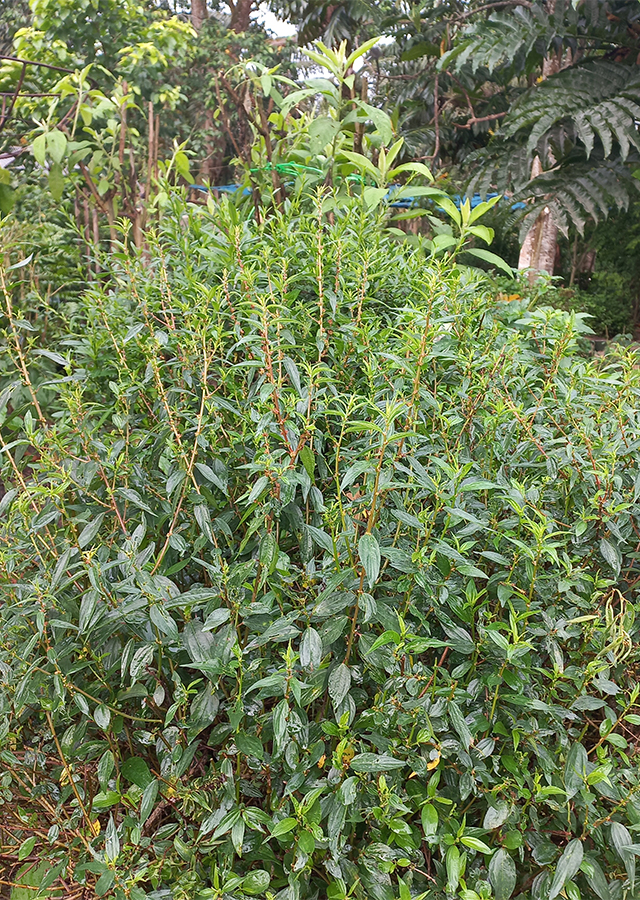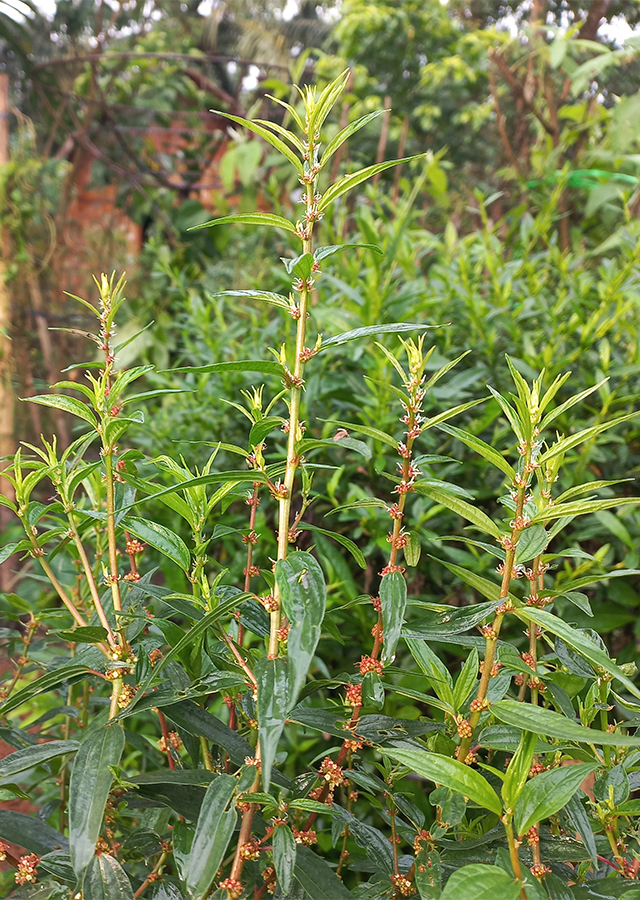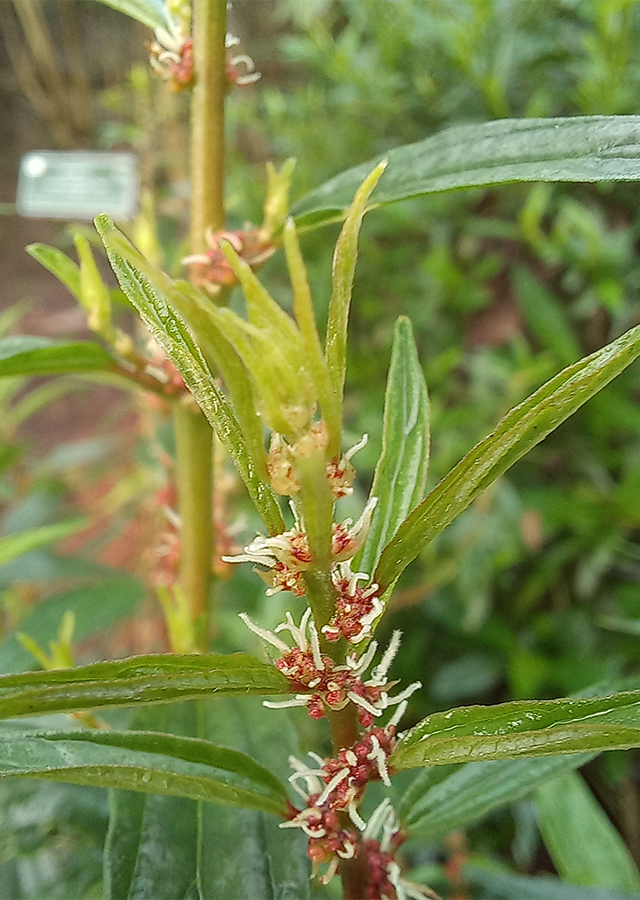Graceful Pouzolzsbush
Pouzolzia zeylanica (L.) Benn.
Urticaceae
Location in our garden
Beneficial Weed



Synonym
Parietaria zeylanica L.
Pouzolzia indica var. alienata Wedd.
Pouzolzia zeylanica var. alienata (Wedd.) Sasaki
Urtica alienata L.
Habitus
Herbaceous. A perennial herb with erect or ascending stems up to 0.4 m tall
Part Used
Leaves
Stem
Growing Requirements
Full Sunshine
Habitat
Riverbanks
Shrublands
Grassland
Terrestrial
Overview
Pouzolzia zeylanica spreads from E. Asia - Southern China, Indian subcontinent, Myanmar through southeast Asia to Australia and Polynesia. Tender leaves and young shoots cooked and used as a vegetable. They are cut into small pieces and cooked with salt and chilli, and garnished with mustard seeds, curry leaves and onions in oil. Leaves used in preparation of herbal tea. This plant has a number of local medicinal uses and is also a great source of fiber.
Vernacular Names
Lajon turi (Bangladesh), Wu shui ge (Chinese), Pouzolzie de Ceylan (French), Toem tanhit jhnien, Kandab chhneang (Khmer), Kallurukki (Malayalam), Pouzolzia tseylonskaya (Russian), Jukut krinching (Sundanese), Allurki (Tamil), Eddu (Telugu), Bo mam (Vietnamese).
Agroecology
Grows at an altitude of 200-2,400 m above sea level. Likes full sun, in moist places, on sandy soil and sandy loam soil. Often found in meadows, shrubs on riverbanks, and near rice fields.
Morphology
- Stems - reddish stems are densely lined with white hairs.
- Leaves - are ovate to lanceolate and deeply veined (1.2-9 cm long, 0.8-3 cm wide). They are covered in long, white hairs, especially along the leaf margin.
- Flowers - tiny, unisexual flowers are clustered together in the leaf axils.
- Fruits - dry, indehiscent fruits are known as achenes. White, yellow or light brown, tiny fruits are egg-shaped (1-1.2 mm long).
Cultivation
Graceful pouzolzsbush is propagated by seeds.
Chemical Constituents
Beta-sitosterol, daucosterol, oleanolic acid, epicatechin, alpha-amyrin, eugenyl-beta-rutinoside, 2alpha, 3alpha, 19alpha-trihydroxyurs-12-en-28-oic, scopolin, scutellarein-7-O-alpha-L-rhamnoside, scopoletin, quercetin, quercetin-3-O-beta-D-glucoside, apigenin, 2alpha-hydroxyursolic acid, N-[2-(3-hydroxy-4-methoxyphenyl)-2-hydroxyethyl]-3-(4- methoxyphenyl)prop-2-enamide; 14,16-hentriacontanedione; sinapaldehyde; 3,4-dihydro-5,7-dihydroxy-4-(4-hydroxyphenyl) coumarin, alkaloids, glycosides, tannins, and flavonoids.
Traditional Medicinal Uses
Graceful pouzolzsbush used as a vulnerary; more specially, as cicatrizant for gangrenous ulcers, for itching, dysentery and loose stools of infant, as poultice to bone fractures, to kill worms, for skin infections, used for fever, dysentery, and skin eruptions by the Santal tribe, used for treatment of acute mastitis, pyogenic infections, indigestion, abdominal pain, infantile malnutrition, dysuria, hemoptysis, bruise, hematemesis, edema, as galactagogue.
Part Used
Reference Sources
- Stuartxchange. 2019. Philippine Medicinal Plants: Tuia. http://www.stuartxchange.org/Tuia.html. 12-12-2021.
- Flora Fauna Web. 2021. Pouzolzia zeylanica (L.) Benn. & R. Br. https://www.nparks.gov.sg/florafaunaweb/flora/6/6/6649. 12-12-2021.
- Useful Tropical Plants. 2021. Pouzolzia zeylanica. https://tropical.theferns.info/viewtropical.php?id=Pouzolzia+zeylanica". 12-12-2021

